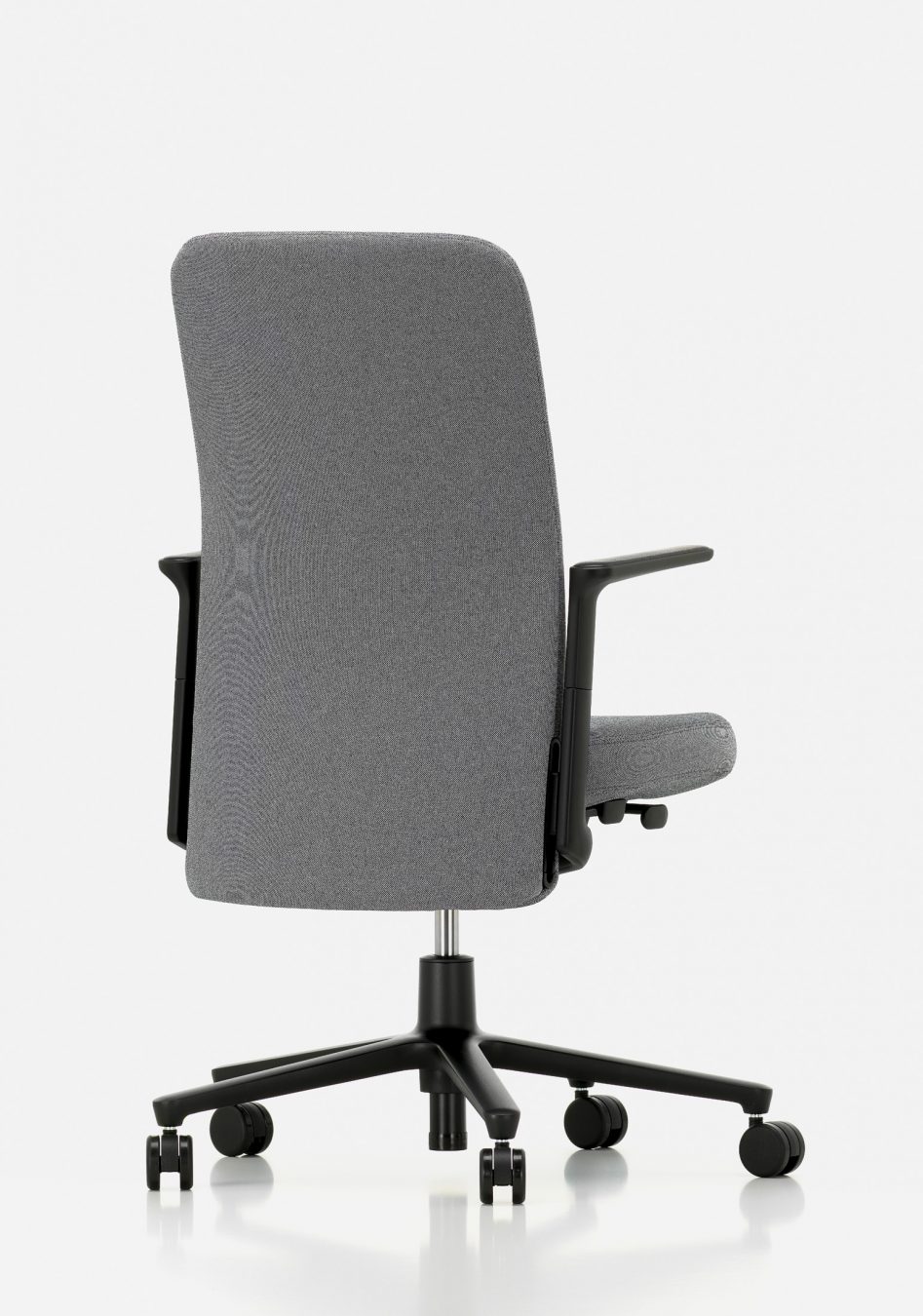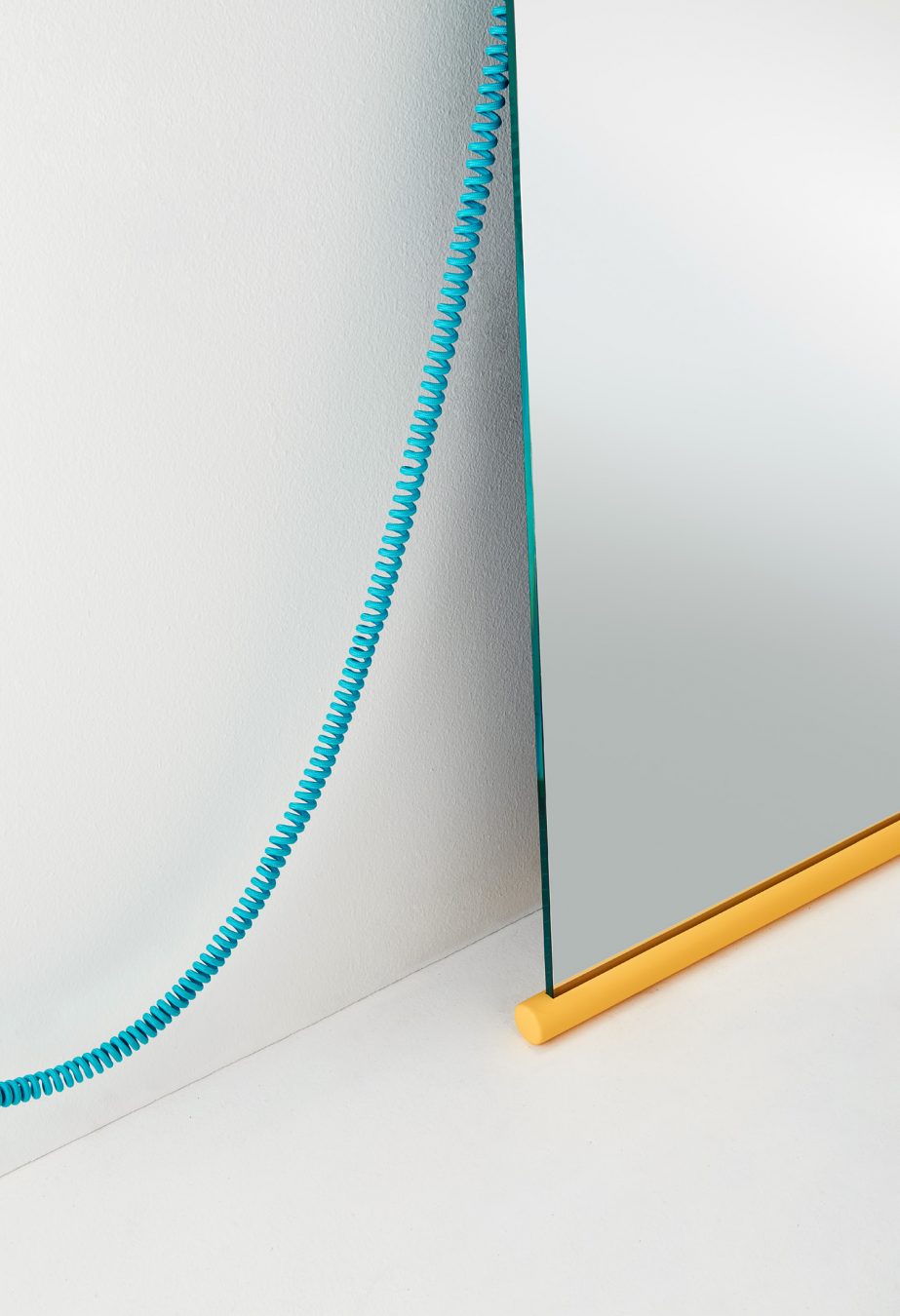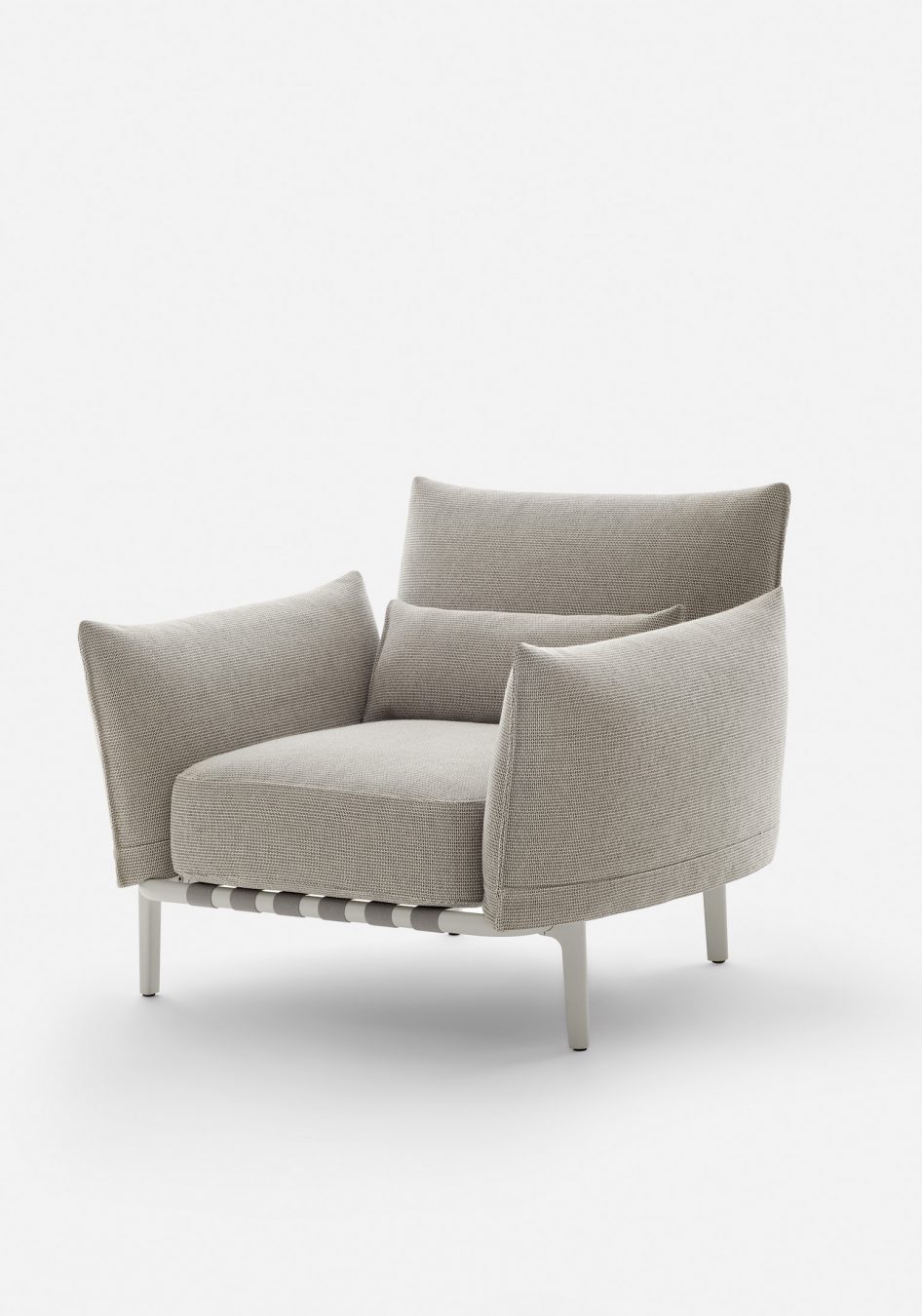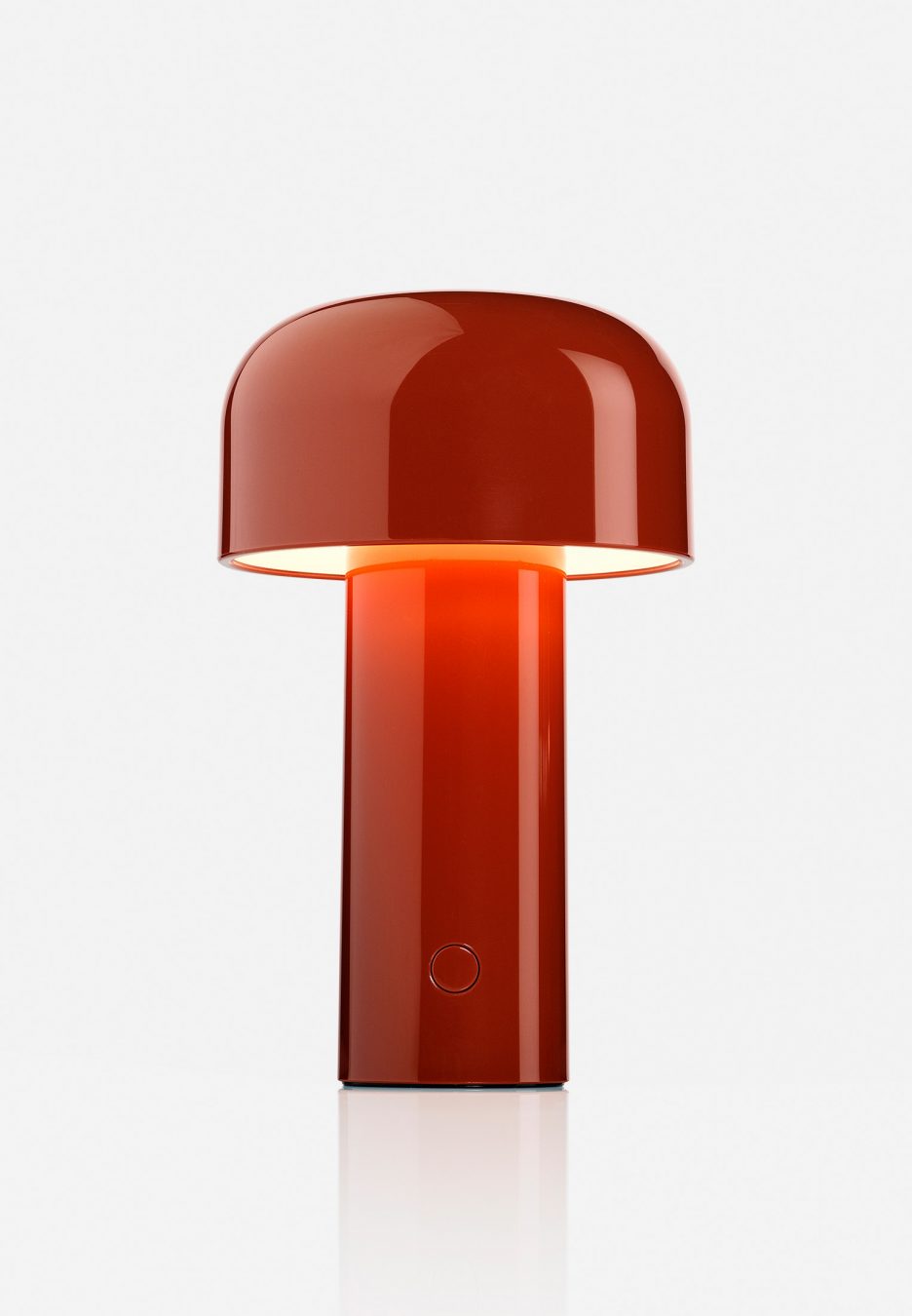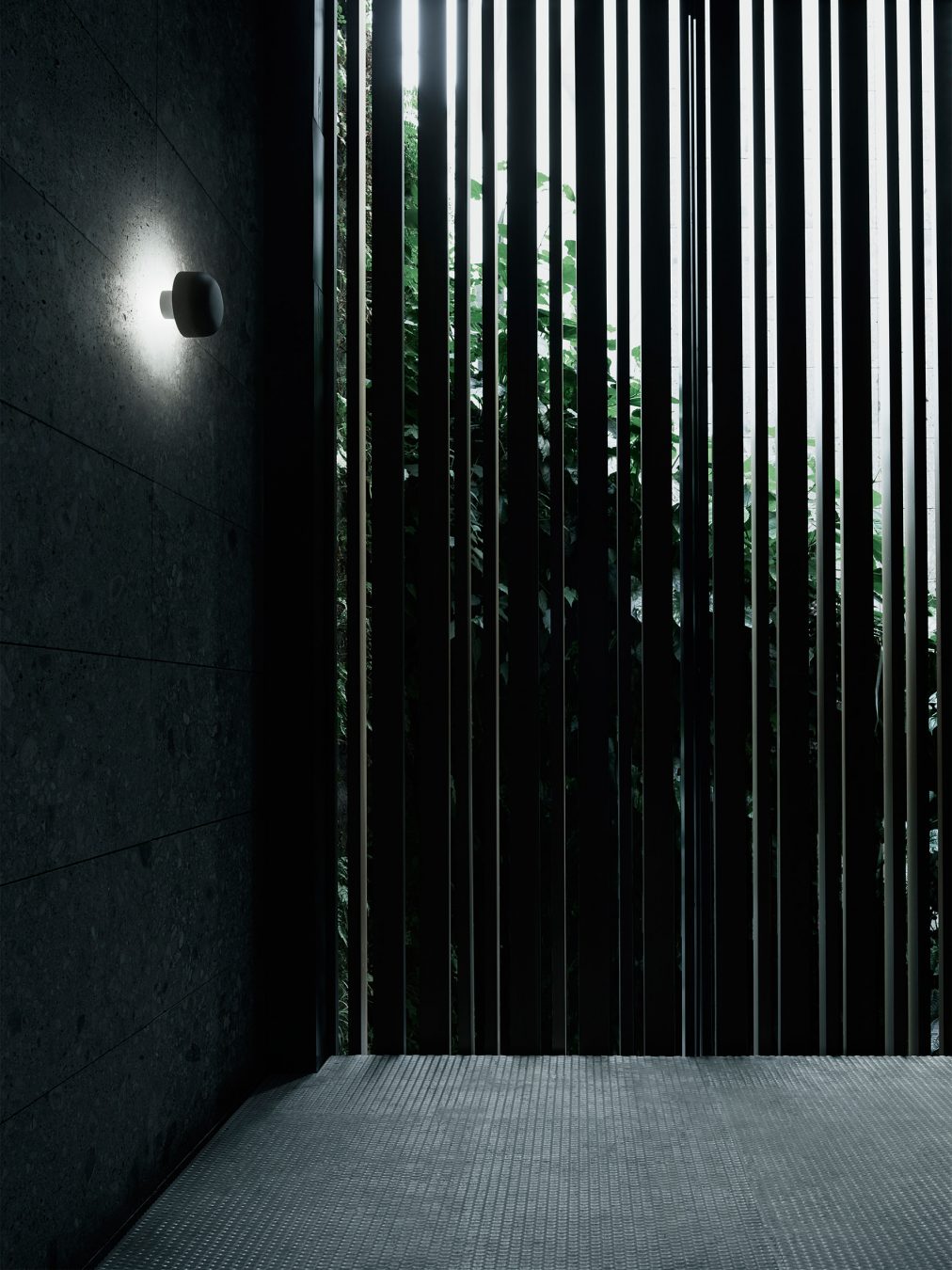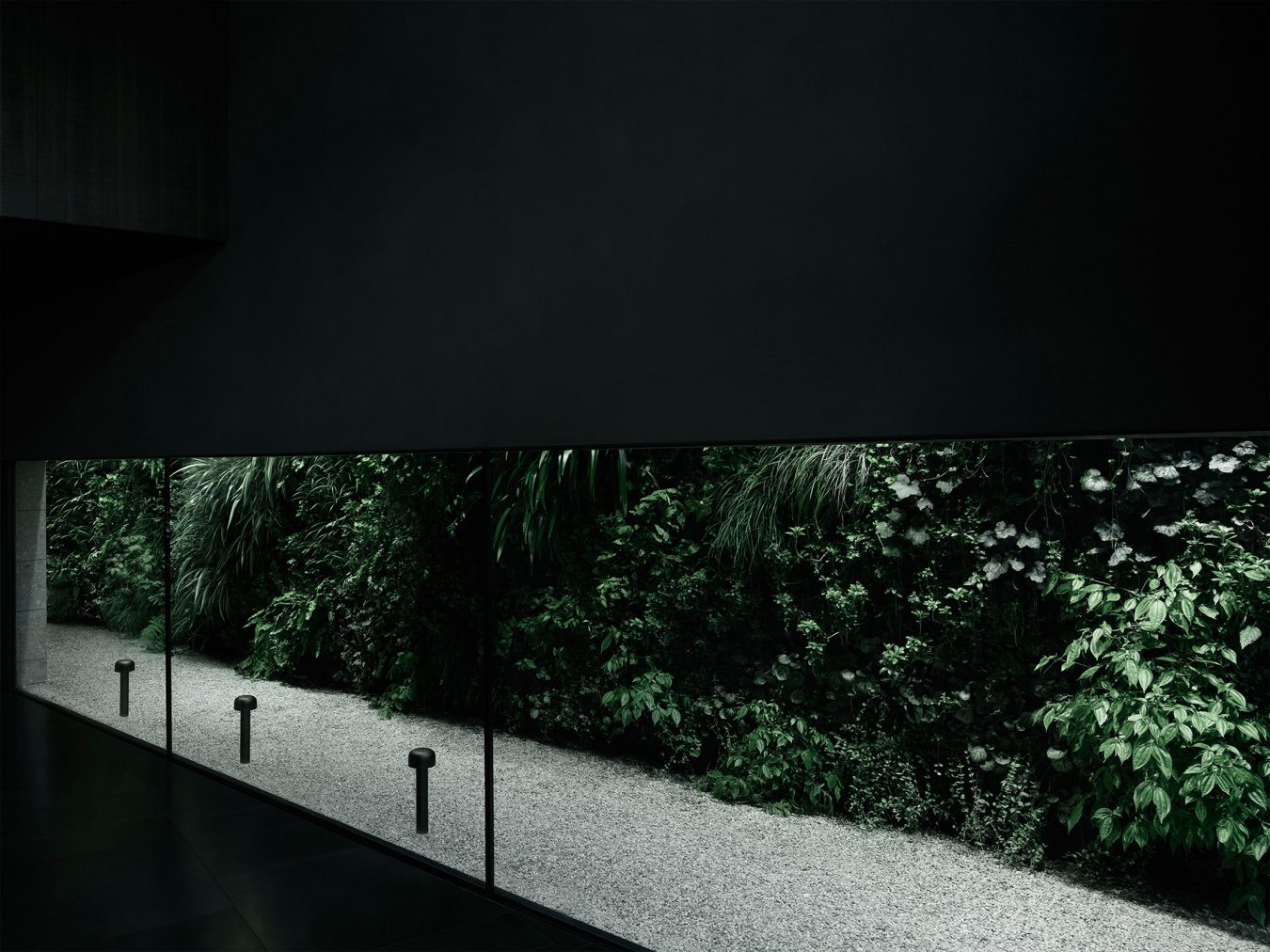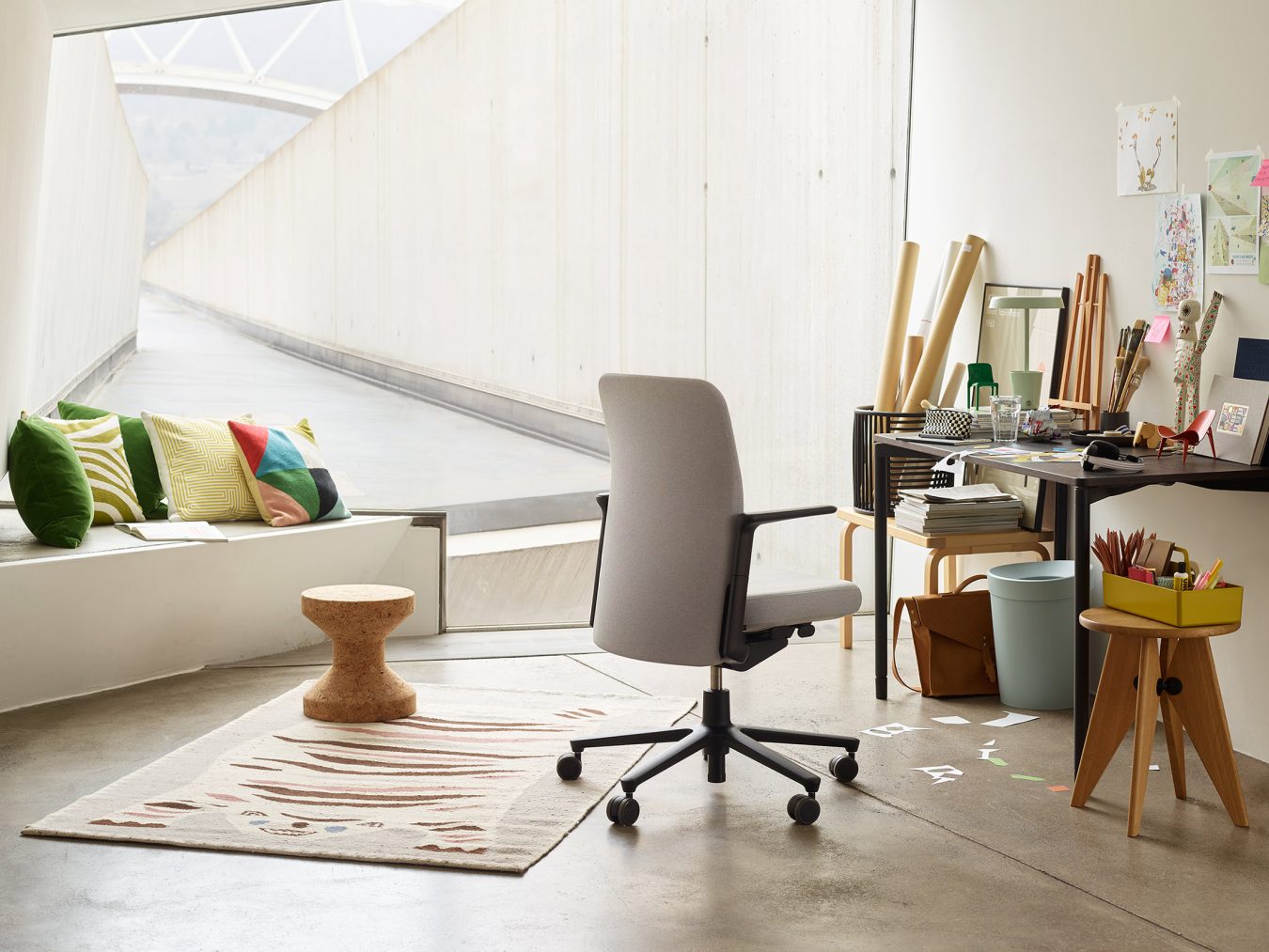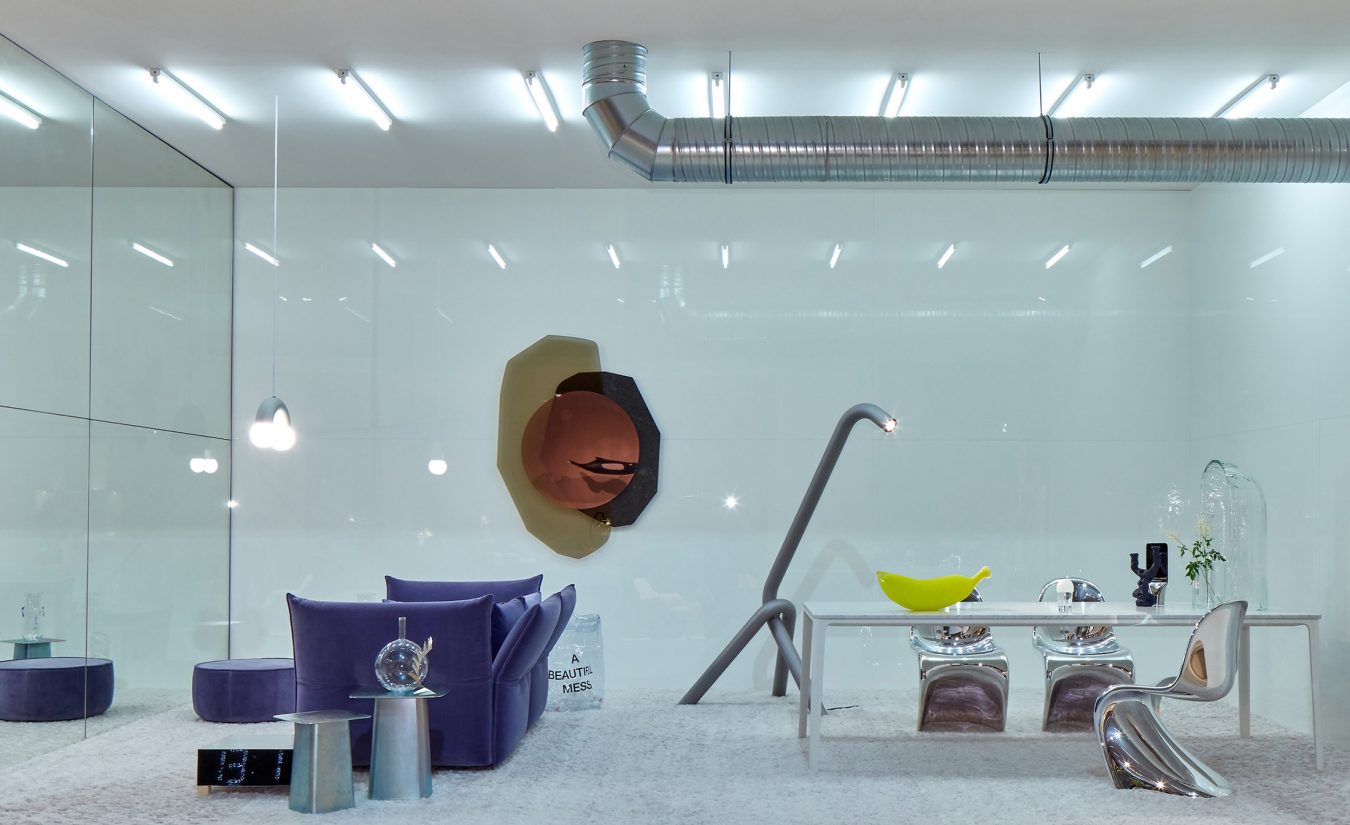I’m in the green room at the Interior Design Show (IDS) in Toronto, leafing through a pamphlet abandoned on the table while I wait for Jay Osgerby to finish his book signing. The brochure is by Swiss furniture manufacturer Vitra and is titled “The Originals”: a not-so-subtle plea to invest in authentic design. Osgerby and his business partner Edward Barber are featured on the last pages, describing in vivid detail how their Tip Ton—a rockable school chair for young students who can’t sit still—came to be.
There’s an underlying thesis that what makes an original is its origins. That maybe if people knew the story behind a piece, they would be less tempted to buy the knockoff. Osgerby is good at telling these types of tales. He’ll recount how it took 30 minutes for Barber to enter the Raphael Gallery at the Victoria and Albert Museum in London after affixing rotating mirrors the size of airplane wings to its ceiling for a BMW installation, fearing being crushed under about 4,000 pounds of aluminum. Or recall the frustration of having a Chinese company get to production with an exact replica of the Tab Lamp they designed for Flos before they could do it themselves. “It’s a proper pain in the ass,” says Osgerby, the latter half of London-based industrial design duo Barber & Osgerby. “Even when we showed the Pacific chair at Orgatec [trade fair in Germany] last year, the same thing was happening. People were turning it upside down, photographing it, copying it. After all that work, just to be ripped off…” He shakes his head.
The desk chair in question took four years to perfect. Its “quiet design”—minimal parts; ergonomic functionality; a calm, linear shape—is emblematic of the Barber & Osgerby ethos: a simplified, function-first approach to design that solves ingrained problems.
With its elongated backrest that conceals under-chair mechanics, vertically aligned profile that automatically adjusts to the sitter’s weight, and armrests that allow the user to sit sideways, the Pacific solved a lot of the little problems that plagued other office chairs on the market. Its first buyer? Apple headquarters.
“I always find if you have an idea—if you actually have a breakthrough in function or use—then you get excited about a project,” says Osgerby. “Otherwise it’s just styling.”
Barber & Osgerby’s problem-solving was put to the ultimate test when they were one of five companies in the running to design the torch for the 2012 London Olympics. A few minor criteria: it had to be reproduced 8,000 times over; its flame had to stay lit in negative-10-degree weather, and withstand rain, snowstorms, and gusts of wind at 80 kilometres per hour; and it needed to be capable of being dropped from a height of six feet onto tarmac without exploding.
On stage at IDS, Osgerby recounts staying up for 10 days and winning the project. Their vision was for a torch that felt like sporting equipment: two skins of die-cast aluminum overlapping in honeycombs of perforated layers, concealing a virtually inextinguishable cocktail of butane and propane that, when lit, produced the precise Olympic orange. “When I’m buried, I’ll be buried with the 2012 Olympic torch,” says Osgerby. The audience laughs. I don’t think he’s joking.
Now six years post-Olympics, he is ready for his next challenge. “I’d like to design more things that can be fixed, rather than stuff that’s chucked. Partly because it’s wasteful to throw things away, but more than that it’s really joyful to fix something,” he says. “In a way that’s something that’s been taken away from us by technology—I’m sure that’s why people are getting so into knitting and gardening and baking. It’s a really important part of being a human being.”
In summer 2017, on their roadshow through the United States to launch the Pacific chair, Osgerby and Barber stopped by the Eames House in Los Angeles—birthplace of designs so often replicated that copies are now outlawed in the UK. Osgerby marvelled at the eucalyptus trees on the property. “They’re incredible. Huge, high, massive things,” he recalls offhandedly. “I took some of the seeds. I’ve currently got them in the fridge at home just getting ready to plant—see if I can actually germinate an Eames tree.”
“An original?” I ask jokingly.
He grins. “Definitely an original.”
Design the perfect space.


